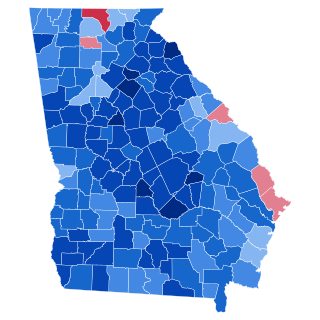
The 1956 United States presidential election in New York took place on November 6, 1956. All contemporary 48 states were part of the 1956 United States presidential election. Voters chose 45 electors to the Electoral College, which selected the president and vice president.

The 1952 United States presidential election in New York took place on November 4, 1952. All contemporary 48 states were part of the 1952 United States presidential election. Voters chose 45 electors to the Electoral College, which selected the president and vice president.

The 1952 United States presidential election in Massachusetts took place on November 4, 1952, as part of the 1952 United States presidential election, which was held throughout all contemporary 48 states. Voters chose 16 representatives, or electors to the Electoral College, who voted for president and vice president.

The 1952 United States presidential election in Vermont took place on November 4, 1952, as part of the 1952 United States presidential election which was held throughout all contemporary 48 states. Voters chose three representatives, or electors to the Electoral College, who voted for the president and vice president.

The 1952 United States presidential election in New Jersey took place on November 4, 1952. All contemporary 48 states were part of the 1952 United States presidential election. Voters chose 16 electors to the Electoral College, which selected the president and vice president.

The 1956 United States presidential election in New Hampshire took place on November 6, 1956, as part of the 1956 United States presidential election, which was held throughout all contemporary 48 states. Voters chose four representatives, or electors to the Electoral College, who voted for president and vice president.

The 1952 United States presidential election in New Hampshire took place on November 4, 1952, as part of the 1952 United States presidential election, which was held throughout all contemporary 48 states. Voters chose four representatives, or electors to the Electoral College, who voted for president and vice president.

The 1956 United States presidential election in Nevada took place on November 6, 1956, as part of the 1956 United States presidential election. State voters chose three representatives, or electors, to the Electoral College, who voted for president and vice president.

The 1956 United States presidential election in Washington took place on November 6, 1956, as part of the 1956 United States presidential election. Voters chose nine representatives, or electors, to the Electoral College, who voted for president and vice president.

The 1952 United States presidential election in Washington took place on November 4, 1952, as part of the 1952 United States presidential election. Voters chose nine representatives, or electors, to the Electoral College, who voted for president and vice president.

The 1952 United States presidential election in Arizona took place on November 4, 1952, as part of the 1952 United States presidential election. State voters chose four representatives, or electors, to the Electoral College, who voted for president and vice president.

The 1952 United States presidential election in Georgia took place on November 4, 1952, as part of the 1952 United States presidential election. Georgia voters chose 12 representatives, or electors, to the Electoral College, who voted for president and vice president.

The 1952 United States presidential election in Kentucky took place on November 4, 1952, as part of the 1952 United States presidential election. Kentucky voters chose 10 representatives, or electors, to the Electoral College, who voted for president and vice president.

The 1952 United States presidential election in Oregon took place on November 4, 1952, as part of the 1952 United States presidential election. Voters chose six representatives, or electors, to the Electoral College, who voted for president and vice president.

The 1952 United States presidential election in Ohio took place on November 4, 1952, as part of the 1952 United States presidential election. State voters chose 25 representatives, or electors, to the Electoral College, who voted for president and vice president.

The 1952 United States presidential election in South Dakota took place on November 4, 1952, as part of the 1952 United States presidential election. Voters chose four representatives, or electors, to the Electoral College, who voted for president and vice president.

The 1952 United States presidential election in North Dakota took place on November 4, 1952, as part of the 1952 United States presidential election. Voters chose four representatives, or electors, to the Electoral College, who voted for president and vice president.

The 1952 United States presidential election in Oklahoma took place on November 4, 1952, as part of the 1952 United States presidential election. Voters chose eight electors to the Electoral College, who voted for president and vice president.

The 1952 United States presidential election in Michigan took place on November 4, 1952, as part of the 1952 United States presidential election. Voters chose 20 representatives, or electors, to the Electoral College, who voted for president and vice president.

The 1952 United States presidential election in Indiana took place on November 4, 1952, as part of the 1952 United States presidential election. State voters chose 13 representatives, or electors, to the Electoral College, who voted for president and vice president.
























